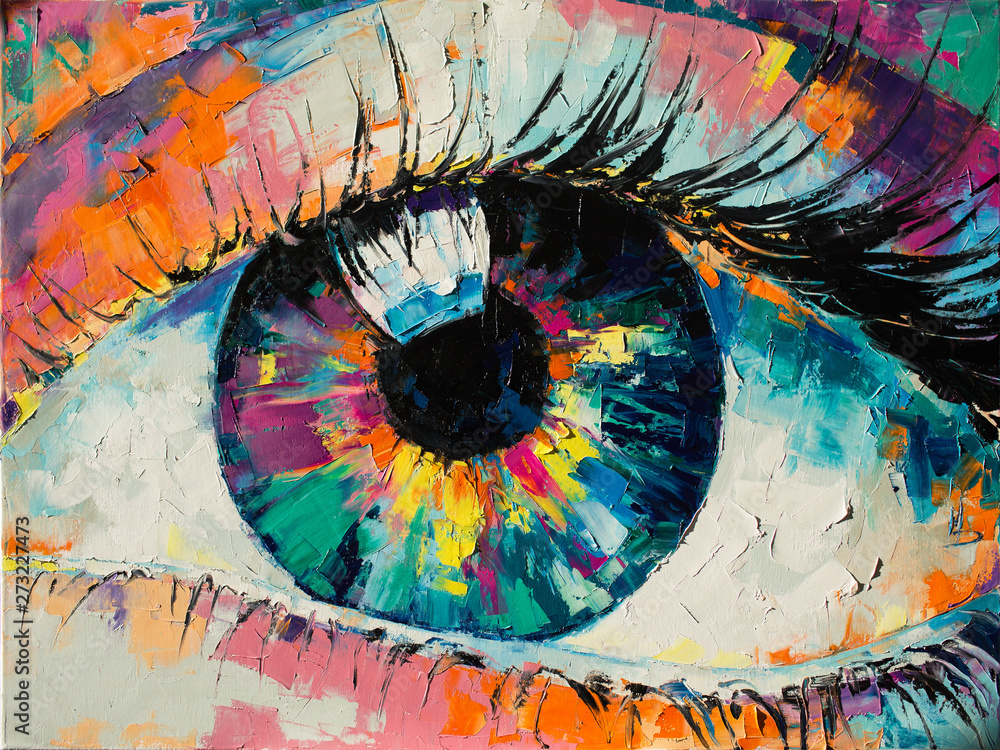Oil Paintings for Sale to Transform Any Room
Oil Paintings for Sale to Transform Any Room
Blog Article
Discovering Everything About Oil Paints: An Overview to Comprehending Their Beauty and Worth
Oil paints have actually mesmerized target markets for centuries, offering a peek into the creative proficiency of numerous periods. Their rich history is linked with innovative methods and extensive emotional expression. Recognizing the materials and approaches behind these art work can boost gratitude. Additionally, the marketplace for oil paints provides possibilities for collectors and investors alike. As one discovers this remarkable world, the inquiry develops: what makes an oil painting truly valuable?
The History of Oil Painting: A Trip With Time
Although oil painting has roots that date back to old times, it absolutely prospered throughout the Renaissance, when musicians found its versatility and abundant shade possibility. Early instances can be traced to the 7th century, with techniques advancing especially throughout societies. The medium came to be famous in Northern Europe in the 15th century, particularly via the works of musicians like Jan van Eyck, that pioneered its use for comprehensive realistic look and vibrant colors. This duration noted a departure from tempera paints, enabling better depth and structure. As oil painting spread, it affected plenty of musicians, leading to work of arts by distinguished figures such as Leonardo da Vinci and Rembrandt. The tool's legacy continues, shaping the art globe well right into modern-day times.
Understanding Oil Repaints: Products and Techniques
As artists discover the globe of oil paints, they run into a varied selection of products and strategies that define this medium. The main elements of oil paint include pigments, which provide shade, and drying out oils, such as linseed, that bind the pigments and facilitate application. Numerous additives can change the paint's texture and drying out time, boosting convenience. Techniques like glazing, where clear layers are developed, and impasto, which includes using thick paint, enable different aesthetic effects. In addition, the use of brushes, scheme knives, and also fingers can produce distinct structures and finishes. Comprehending these strategies and products allows musicians to totally share their creativity and achieve the wanted influence in their art work.
The Role of Shade in Oil Paints
Shade plays a critical function in oil paints, influencing both visual charm and emotional resonance. Understanding color theory essentials, consisting of the partnerships between shades, can enhance a musician's capacity to share mood and ambience. Additionally, grasping shade blending strategies permits higher depth and splendor in a painting's palette.

Color Theory Essential
Comprehending color concept is crucial for musicians collaborating with oil paints, as it creates the structure for developing aesthetically engaging and unified compositions. Shade concept incorporates the research study of just how colors engage, the shade wheel, and the partnerships between key, additional, and tertiary colors. Artists utilize complementary shades to enhance contrasts and produce centerpieces, while comparable shades advertise unity and cohesiveness within a piece. Furthermore, the concepts of trendy and cozy colors affect the perception of depth and area in a painting. Understanding these concepts permits artists to manipulate color successfully, assisting the audience's eye and interacting their intended message. Mastery of color concept inevitably improves an artist's ability to share emotions and ideas through their work.
Psychological Impact of Color
The emotional effect of color in oil paintings plays a critical role in how visitors perceive and attach with artwork. Colors stimulate details feelings and moods, affecting the viewer's mood. As an example, cozy shades like reds and oranges can create a sense of heat and energy, while great tones such as blues and greens typically evoke calmness or self-questioning. Artists purposefully select color schemes to enhance narrative components, assisting the target market's emotional trip. The saturation and contrast of colors even more intensify these impacts, attracting interest and creating emphasis. Inevitably, the interaction of shades in oil paintings not just enhances their aesthetic charm however also works as an effective medium for psychological expression, improving the viewer's experience and interpretation.
Color Mixing Techniques
While lots of facets of oil paint add to the overall structure, understanding shade blending strategies is important for achieving wanted effects and depth. Shade blending can be come close to with different approaches, consisting of the subtractive and additive procedures. Additive blending entails integrating colors of light, while subtractive mixing relies upon pigments, where shades blend to produce new shades. Musicians often utilize a limited combination to produce unified works, understanding the partnerships in between key, additional, and tertiary colors. Methods such as glazing and scumbling further boost deepness and brightness. By skillfully blending colors, a musician can evoke feelings, produce centerpieces, and achieve a feeling of realistic look, eventually boosting the painting's aesthetic and psychological influence.
Famous Oil Painters and Their Iconic Works

Renowned for their proficiency of color and technique, oil painters have produced several of the most well known art work in background. Distinguished artists like Vincent van Gogh mesmerized target markets with his emotive brushwork in "Starry Night," while Claude Monet's "Impression, Daybreak" prepared for Impressionism. Leonardo da Vinci's "Mona Lisa" remains a long-lasting icon of creative genius, showcasing his ability in recording human expression. At the same time, Rembrandt's "The Night Watch" highlights his ingenious usage of light and shadow. Various other remarkable numbers consist of Pablo Picasso, who reinvented modern-day art with his strong trial and error in jobs like "Les Demoiselles d'Avignon," and Georgia O'Keeffe, whose dynamic representations of landscapes and blossoms assisted specify American innovation. Each musician's special design added substantially to the oil painting landscape.
How to Evaluate the Top Quality of an Oil Paint
Evaluating the quality of an oil painting includes a mindful analysis of workmanship methods, along with an analysis of shade and make-up. Observing brushwork, layering, and the application of paint can reveal the musician's skill level. In addition, the interaction of colors and the general arrangement of components add significantly to the paint's aesthetic value.
Analyzing Workmanship Strategies
A careful evaluation of workmanship strategies is crucial for establishing the top quality of an oil paint. Critics ought to initially examine the application of paint; thick, distinctive brushstrokes may recommend a skilled hand, while overly consistent applications could indicate an absence of depth. oil paintings for sale. The layering strategy is likewise crucial; the visibility of lusters and varied density can enhance brightness and intricacy. Furthermore, the top quality of the products used, such as the canvas and pigments, plays a substantial role in sturdiness and overall visual. Interest to detail in components like sides and changes in between colors reflects the artist's dedication to their craft. Eventually, these techniques contribute to the painting's emotional impact and market price, offering as indications of the musician's skill check here and intent
Evaluating Shade and Structure
While assessing the top quality of an oil painting, one must concentrate on the interplay of color and structure, as these aspects are basic to the art work's total impact. Shade selections can establish and stimulate emotions mood; therefore, the artist's palette ought to be analyzed for harmony and contrast. A well-balanced make-up guides the audience's eye and creates a feeling of unity. Musicians commonly utilize strategies like the guideline of thirds or leading lines to improve aesthetic interest. Additionally, the usage of light and darkness can add depth, enhancing the three-dimensionality of the painting. Eventually, a successful oil painting weds color and composition, engaging the customer and inviting a deeper recognition of the musician's vision and method.
Taking care of and Preserving Oil Paintings
Proper treatment and preservation of oil paints is crucial for keeping their integrity and durability. To shield these artworks, it is important to present them away from straight sunlight, which can create fading and staining. Preserving a secure setting with controlled temperature level and humidity additional aids in stopping damage. Cleaning must be done gently utilizing a soft, completely dry fabric, staying clear of any extreme chemicals that could harm the paint or varnish. Regular evaluations for indications of wear and tear, such as flaking or cracking, are a good idea. When keeping or transferring oil paints, proper extra padding and framework are required to avoid physical damage. Eventually, diligent care adds to the aesthetic charm and worth of oil paintings with time.
The Marketplace for Oil Paints: Spending and accumulating
Understanding the market dynamics for oil paints is crucial for collectors and financiers alike. The worth of these artworks is influenced by different variables, including the artist's track record, historic significance, and existing fads. Collectors frequently look for pieces that resonate personally while considering potential admiration in worth. Galleries and auctions function as main locations for purchasing and selling, with prices fluctuating based on demand and rarity. Purchasing oil paints requires study right into the market, along with an understanding of credibility and provenance. In addition, arising musicians might use possibilities for considerable returns, while developed names can regulate high prices. On the whole, a tactical strategy to accumulating can yield both visual enjoyment and monetary incentives.

Frequently Asked Inquiries
What Are the Environmental Influences of Oil Paint Products?
The ecological influences of oil painting materials consist of the launch of volatile natural compounds (VOCs), harmful waste generation, and source removal for pigments. These factors add to pollution and ecological deterioration, increasing worries among ecologically mindful musicians and consumers.
Exactly How Do Different Canvases Affect Oil Painting Results?
Various canvases affect oil painting results substantially. Absorbency, appearance, and surface top quality can alter paint application, drying out times, and color vibrancy. Musicians commonly pick certain canvases to achieve wanted results and enhance their creative expression.
Can Oil Paintings Be Restored if Damaged?
If damaged, Oil paintings can undoubtedly be restored. Expert conservators use various methods to repair rips, clean surfaces, and address discoloration, making certain that the artwork maintains its original appeal and worth for future generations.
What Are the Signs of an Original Oil Painting?
The indications of an initial oil painting include visible brush strokes, texture variations, and an irregular canvas weave (oil paintings for sale). In addition, authenticity may be confirmed through provenance, signatures, and the existence of a varnish layer unique to oil tools
How Has Innovation Influenced Modern Oil Painting Techniques?
Innovation has greatly affected contemporary oil painting methods by presenting electronic tools for planning, enhanced materials for structure and longevity, and on-line systems for sharing and offering art, therefore broadening artists' innovative possibilities and target market reach. Oil paint has roots that date back to ancient times, it truly prospered during the Renaissance, when artists discovered its flexibility and abundant color capacity. The psychological influence of color in oil paints plays a crucial role in just how viewers connect and regard with artwork. While lots of facets of oil paint contribute to the overall structure, understanding shade blending techniques is necessary for attaining desired effects and depth. Reviewing the quality of an oil paint involves a mindful evaluation of workmanship methods, as well as an analysis of shade and composition. While reviewing the quality of an oil paint, one should concentrate on the interplay of shade and composition, as these components are fundamental to the art work's overall influence.
Report this page